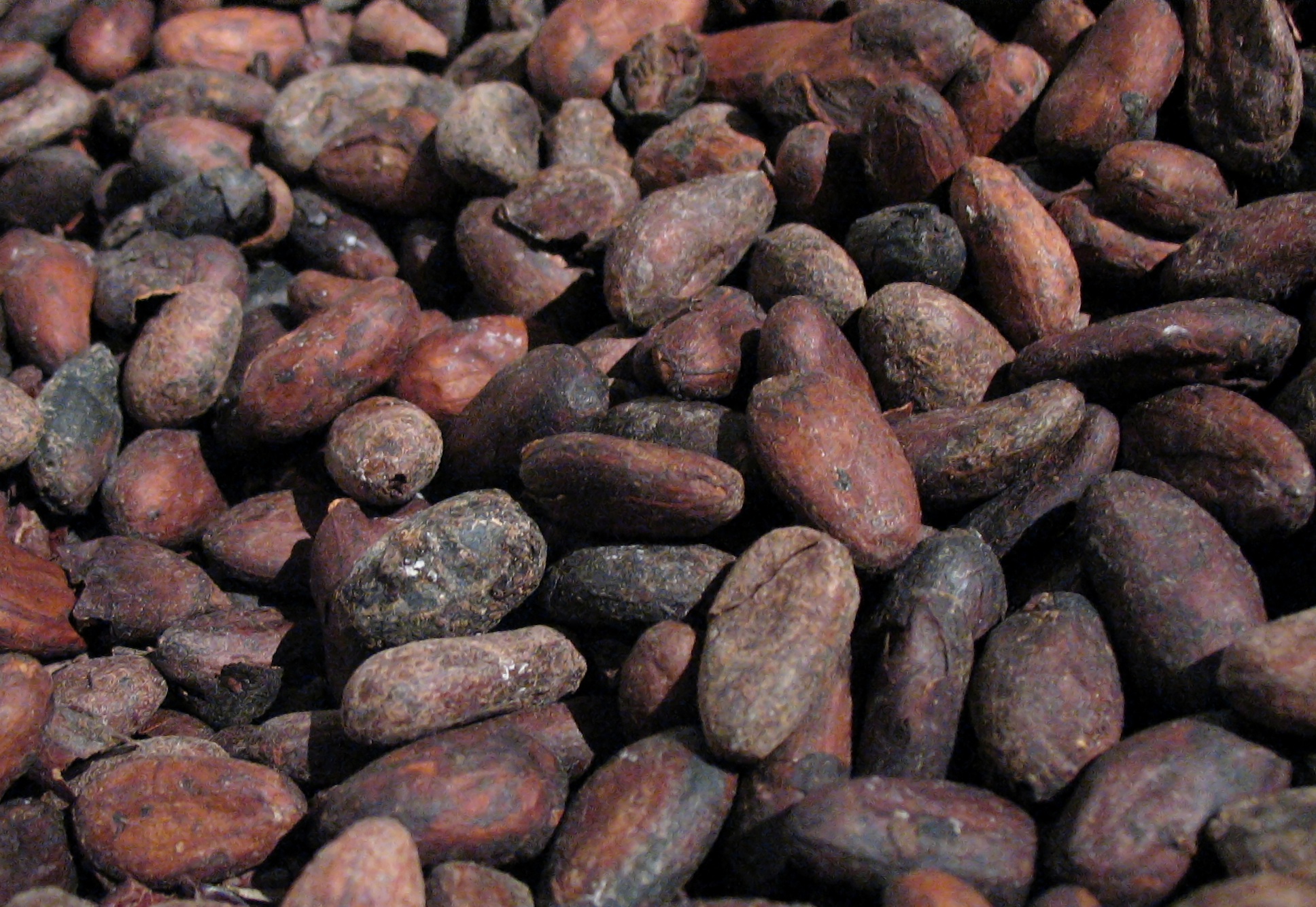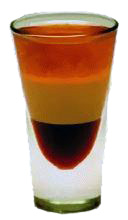|
De Kuyper Royal Distillers
DeKuyper Royal Distillers () is a privately held Dutch company in the business of manufacturing and marketing distilled spirits and liqueurs. The company was founded in 1695 by Petrus De Kuyper as a manufacturer of barrels and casks used in the transportation of spirits and beer. His last name, De Kuyper, actually meaning the cooper. By 1752, the family owned a distillery in Schiedam which was then the leading center for the production of Dutch gin or genever. In the 19th century, the company expanded its export business throughout Europe, Great Britain and Canada. In 1911, a new distillery was built in Schiedam and thereafter the production of liqueur began. The roster of flavors slowly expanded, and partnerships were formed with distillers in Canada (1932) and the United States (1934, strategically at the end of Prohibition). By the 1960s the production of liqueurs had overtaken the production of genever as drinks tastes changed and the promotion of liqueurs for use in coc ... [...More Info...] [...Related Items...] OR: [Wikipedia] [Google] [Baidu] |
Distilled Beverage
Liquor (or a spirit) is an alcoholic drink produced by distillation of grains, fruits, vegetables, or sugar, that have already gone through alcoholic fermentation. Other terms for liquor include: spirit drink, distilled beverage or hard liquor. The distillation process concentrates the liquid to increase its alcohol by volume. As liquors contain significantly more alcohol (ethanol) than other alcoholic drinks, they are considered 'harder'; in North America, the term ''hard liquor'' is sometimes used to distinguish distilled alcoholic drinks from non-distilled ones, whereas the term ''spirits'' is more common in the UK. Some examples of liquors include vodka, rum, gin, and tequila. Liquors are often aged in barrels, such as for the production of brandy and whiskey, or are infused with flavorings to form a flavored liquor such as absinthe. While the word ''liquor'' ordinarily refers to distilled alcoholic spirits rather than beverages produced by fermentation alone, it ... [...More Info...] [...Related Items...] OR: [Wikipedia] [Google] [Baidu] |
Chocolate Liqueur
Chocolate liqueur is a chocolate flavored liqueur made from a base liquor of whisky or vodka. Unlike chocolate liquor, chocolate liqueur does contain alcohol and is often used as a sweetening ingredient in mixology, baking, and cooking. History There is mention, in French, of producing and selling chocolate ''en liqueur'' as early as 1666. Context suggests this is a chocolate liqueur, not a chocolate liquor or cocoa bean extract nor any other chocolate flavored beverage. In New England prior to the 18th century American Revolution, a "chocolate wine" was popular. Its ingredients included sherry, port, chocolate, and sugar. A French manual published in 1780 also describes chocolate liqueur. An 1803 French pharmacy manual includes a recipe for a chocolate liqueur (''ratafia de chocolat'', also ''ratafia de cacao''). An early 19th-century American cookbook, published in 1825 and preserved in an historical archive in South Carolina, includes a similar recipe. Throughout the ... [...More Info...] [...Related Items...] OR: [Wikipedia] [Google] [Baidu] |
Kamikaze (cocktail)
The Kamikaze is made of equal parts vodka, triple sec and lime juice. Garnish is typically a wedge or twist of lime. ''Kamikaze'' () is a Japanese word literally meaning "divine wind". Dozens of variations exist in online databases today. Some include the addition of cane sugar. See also * Gimlet (cocktail) The gimlet () is a cocktail made of gin and lime cordial. A 1928 description of the drink was: gin, and a spot of lime. A description in the 1953 Raymond Chandler novel '' The Long Goodbye'' stated that "a real gimlet is half gin and half Rose' ... References External links * Cocktails with lime juice Cocktails with triple sec or curaçao Cocktails with vodka Sour cocktails {{Cocktail-stub ... [...More Info...] [...Related Items...] OR: [Wikipedia] [Google] [Baidu] |
Shooter (mixed Drink)
A shooter, or shot, is a small serving of spirits or a mixed drink (usually about one ounce), typically consumed quickly, often in a single gulp. It is common to serve a shooter as a "side" to a larger drink. Shooters can be shaken, stirred, blended, layered, or simply poured. Shot glasses or sherry glasses are the usual drinkware in which shooters are served. They are most commonly served at bars, and some bartenders have their own "signature" shooter. The ingredients of shooters vary from bartender to bartender and from region to region. Two shooters can have the same name but different ingredients, resulting in two very different tastes. List of drink shots Shooters with beer ; Mixed shooters * Boilermaker or Depth Charge: a beer mix * Snakebite: variations and alternate names: Snakebite and black, Diesel, Snakey B, Purple nasty, Purple, Black, Deadly snakebite, Hard snakebite, and Super snakebite. * U-Boot: a beer mix * Irish car bomb: a mix of Irish whisky ... [...More Info...] [...Related Items...] OR: [Wikipedia] [Google] [Baidu] |
Kirsch
Kirschwasser (, ; , German for "cherry water") or kirsch is a clear, colorless brandy traditionally made from double distillation of morello cherries, a dark-colored cultivar of the sour cherry. It is now also made from other kinds of cherries. The cherries are fermented completely, including their stones.Lichine, Alexis. ''Alexis Lichine's New Encyclopedia of Wines & Spirits'' (New York: Alfred A. Knopf, 1987), p. 292. Unlike cherry liqueurs and cherry brandies, kirschwasser is not sweet. It is sometimes distilled from fermented cherry juice. Serving Kirschwasser is usually imbibed neat. It is traditionally served cold in a very small glass and is taken as an apéritif. It is an important ingredient in fondue. People in the German-speaking region where it originated usually serve it after dinner, as a digestif. Kirschwasser is used in some cocktails, such as the Ladyfinger, the Florida, and the Rose. High-quality kirschwasser should be served around , warmed by th ... [...More Info...] [...Related Items...] OR: [Wikipedia] [Google] [Baidu] |
Brandy
Brandy is a liquor produced by distilling wine. Brandy generally contains 35–60% alcohol by volume (70–120 US proof) and is typically consumed as an after-dinner digestif. Some brandies are aged in wooden casks. Others are coloured with caramel colouring to imitate the effect of aging, and some are produced using a combination of both aging and colouring. Varieties of wine brandy can be found across the winemaking world. Among the most renowned are Cognac and Armagnac from southwestern France. In a broader sense, the term ''brandy'' also denotes liquors obtained from the distillation of pomace (yielding pomace brandy), or mash or wine of any other fruit (fruit brandy). These products are also called '' eau de vie'' (which translates to "water of life"). History The origins of brandy are tied to the development of distillation. While the process was known in classical times, it was not used for significant beverage production until the 15th century. In the early 16th ... [...More Info...] [...Related Items...] OR: [Wikipedia] [Google] [Baidu] |
Crème De Menthe
Crème de menthe (, French for "mint cream") is a sweet, mint-flavored alcoholic beverage. It is available commercially in a colorless version (called "white") and a green version (colored by the mint leaves or by added coloring if made from extract instead of leaves). Both varieties have similar flavor and are interchangeable in recipes, except where color is important. It is usually made with Corsican mint or peppermint, which is steeped in grain alcohol for several weeks before it is filtered and sweetened to create the final product. It typically has 25% alcohol by volume. Crème de menthe is an ingredient in several cocktails, such as the Grasshopper and the Stinger. It is also served as a digestif and used in cooking as a flavoring (see Mint chocolate). It is also a primary component of the popular South African shooter known as the Springbokkie. Music Sergei Rachmaninoff, although otherwise a teetotaler, found that a glass of crème de menthe steadied his nerves when p ... [...More Info...] [...Related Items...] OR: [Wikipedia] [Google] [Baidu] |
Crème De Cassis
Crème de cassis () (also known as Cassis liqueur) is a sweet, dark red liqueur made from blackcurrants. Several cocktails are made with crème de cassis, including the popular wine cocktail, kir. It may also be served as an after-dinner liqueur or as a frappé. Ingredients It is made from blackcurrants that are crushed and soaked in alcohol, with sugar subsequently added. Origin and production The modern version of the beverage first appeared in 1841, when it displaced " ratafia de cassis", which had been produced in prior centuries. While crème de cassis is a specialty of Burgundy, it is also made in Anjou, England, Luxembourg, Alberta, Quebec, Vermont and Tasmania. The quality of crème de cassis depends upon the variety of fruit used, the content of the berries, and the production process. If it is labelled "Crème de Cassis de Dijon", one is guaranteed berries from the commune of Dijon. In 1979, Germany attempted to restrict the import based on the alcohol content ... [...More Info...] [...Related Items...] OR: [Wikipedia] [Google] [Baidu] |
Coffee Liqueur
Liqueurs are alcoholic beverages that are bottled with added sugar and have added flavours that are usually derived from fruits, herbs, or nuts. Liqueurs are distinct from eaux-de-vie, fruit brandy, and flavored liquors, which contain no added sugar. Most liqueurs range between 15% and 55% alcohol by volume. Berry liqueurs * 99 Berries * Chambord (raspberry) * Crème de cassis (blackcurrant) * Guavaberry * Hideous (raspberries, other berries and citrus fruits) * Lakka (cloudberry) * Lillehammer ( lingonberry) * Mirto (Sardinian traditional bitterish liqueur made with myrtle, used as digestive drink at the end of meals) * Murtado ( ugniberry) * XUXU (strawberry) * Og natura Stone Bramble Liqueur ( stone bramble) Chocolate liqueurs Coffee liqueurs A coffee liqueur is a caffeinated alcoholic drink that consists of coffee and a shot of liqueur. * Allen's Coffee Brandy * Amaro 1716 Café du Soir * Black Canyon Distillery, Richardo's Decaf Coffee Liqueur * Café Ri ... [...More Info...] [...Related Items...] OR: [Wikipedia] [Google] [Baidu] |
Crème De Banane
Crème de banane () is a sweet, banana-flavored liqueur, usually bottled at 17–25% ABV. It is mostly used in alcoholic drinks but also in cooking; it is an ingredient of various cocktails and desserts. Cooking Crème de banane can be used as a syrup on frozen desserts. In some baked dishes, it may be added to obtain a strong banana flavor. Production Companies such as Marie Brizard, Lucas Bols, and DeKuyper make this liqueur. It is based on neutral-tasting, unaged grape brandy flavored by means of infusion Infusion is the process of extracting chemical compounds or flavors from plant material in a solvent such as water, oil or alcohol, by allowing the material to remain suspended in the solvent over time (a process often called steeping). An in ... or maceration. Fruit liqueurs Bananas {{distilled-drink-stub ... [...More Info...] [...Related Items...] OR: [Wikipedia] [Google] [Baidu] |
Crème De Noyaux
Crème de Noyaux () is an almond-flavored crème liqueur, although it is actually made from apricot kernels or the kernels of peach or cherry pits, which provide an almond-like flavor. Both Bols and Hiram Walker produce artificially colored red versions of the liqueur (either of which contribute the pink hue to Pink Squirrel cocktails) while Noyau de Poissy from France is available in both clear (''blanc'') and barrel-aged amber (''ambre'') versions. Historically, crème de noyaux would contain trace amounts of hydrogen cyanide, which is poisonous. Although the chemical was not normally present in a dangerous intensity, bottles of 19th-century Noyaux left for decades in the cellar would sometimes have all the cyanide float up to the top, with lethal results for the drinker of the first glass. Dorothy Sayers used this peculiarity of the old Crème de Noyaux in her short story "Bitter Almonds" (collected in '' In the Teeth of the Evidence'', 1939). The name comes from the Fren ... [...More Info...] [...Related Items...] OR: [Wikipedia] [Google] [Baidu] |





